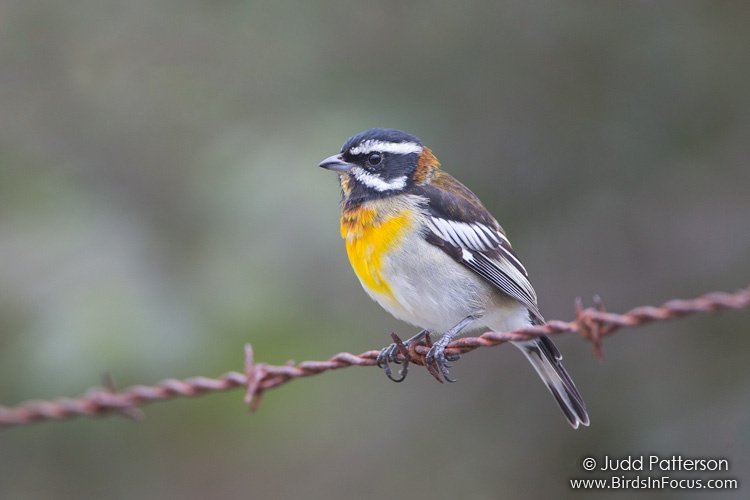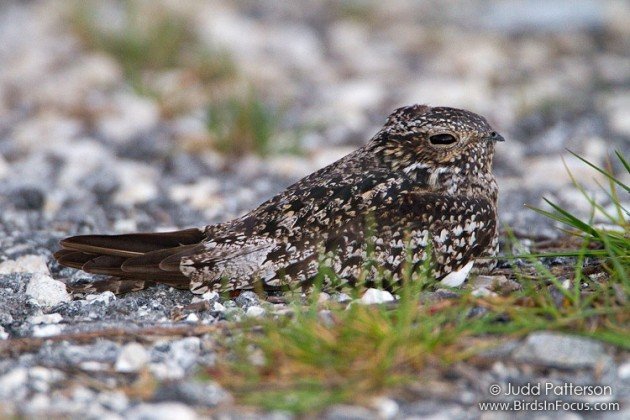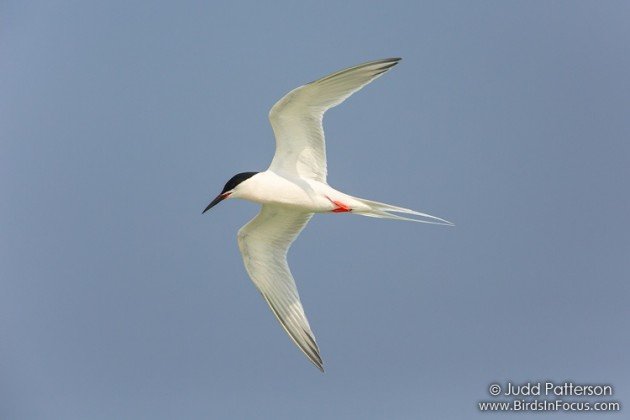
Although many South Florida specialties can be seen throughout the year such as White-crowned Pigeon and Snail Kite, most visiting birders decide to come in the months of April and May in search of summer migrants or secretive birds that only vocalize during the breeding season. Over time, I have noticed that many birders arrive a bit too early to see some of these would-be targets. This article will hopefully dispel some pre-conceived notions and provide some advice on when to visit southern Florida in search of these spring and summer specialties.
Antillean Nighthawk is one of the last Caribbean specialties to arrive in southern Florida.
Migration starts very early in the sunshine state. In January, the first Purple Martins are already arriving. By the time February rolls around, Swallow-tailed Kites are making an appearance while most of the rest of the country is still looking at waterfowl and winter sparrows. However, the first Caribbean summer specialties begin to trickle in by the very end of March in the form of Black-whiskered Vireo and Gray Kingbird. The latter usually appears at migrant traps at coastal sites in the Florida Keys and the southern tip of the peninsula while the former is a bit more catholic in its choice of habitat — passage migrants can appear anywhere from tropical hardwood hammock to strip mall parking lots. Before settling down and setting up breeding territories, both of these species can be somewhat sporadic and hard to pin down for a birding trip. Although arriving at around the same time, the departure dates for both of these species are quite different. Black-whiskered Vireo disappears from the state by the end of August while Gray Kingbird can linger into October (with occasional winter records).
Although known to be resident in South Florida with records throughout the year, the normally furtive and difficult to see Mangrove Cuckoo begins to vocalize with increasing regularity by the second week of April — arguably the best months to see this bird in the ABA area are May and June.
The last two summer migrants of special note to arrive are Antillean Nighthawk and Roseate Tern — both arrive at around the same time during the last few days of April or even early May. Antillean Nighthawks, which are best distinguished by call from the Common Nighthawks that share the same areas, seem to be highly localized breeders in the Florida Keys with regular records of singles in Miami-Dade county. Birds at sites such as small airports linger until the end of August. Roseate Terns, on the other hand, are mostly gone by early August.
Roseate Terns breed in a mixed colony with Least Terns at Marathon in the Florida Keys.
The last three potential targets, Western Spindalis, La Sagra’s Flycatcher, and Bahama Mockingbird, are perhaps also the most desirable for those trying to see new birds in the ABA area. Unfortunately, they show no real regular migration pattern, but one or more individuals of each species seem to show up every year somewhere in Florida. All three species have relatively wide ranges in the Caribbean, occurring on several islands that are quite distant from each other so there must be a strong dispersal mechanism involved for them to successfully colonize so many places. April and May seem to be the best time to see any of the semi-regular West Indian vagrants, but be forewarned that these spring migrants are often present for only a single day or less! As a side note, a pair of Western Spindalis discovered in the summer at Everglades National Park successfully bred and fledged nestlings.
In conclusion, if one does not care about seeing a large number of eastern passage migrants (which peaks at the end of April this far south), the months of May, June, and July are perhaps the best time of year to see these Caribbean specialties — late enough to catch the last set of arrivals while early enough to avoid missing birds that have already returned south. Hopefully, this collection of notes and tips will help the visiting birder decide when to plan their trip to southern Florida.
If you would like to make a trip to southern Florida in search of Caribbean specialties, exotics, or general birding, please visit my webpage at www.ecoavian.com or contact me by email at csanchez1230@gmail.com to inquiry about my guiding services.
Images for this week’s blog post are courtesy of Judd Patterson. More of his stunning photography can be seen at www.birdsinfocus.com.













Awesome article! Such a great tool for visiting birders.
A well-written and informative article, Carlos. Perhaps you should submit it for publication in some birding magazines.
Yes, great article! I hope to get the tern and nighthawk…